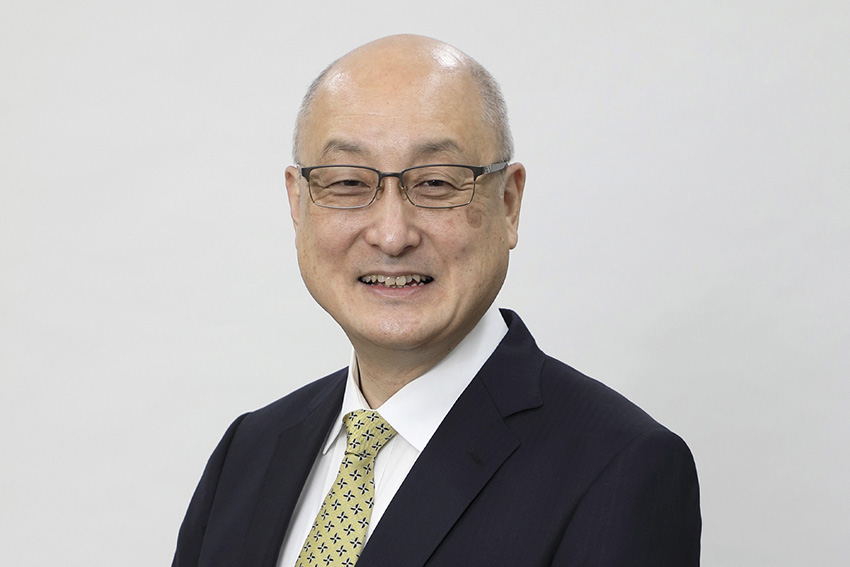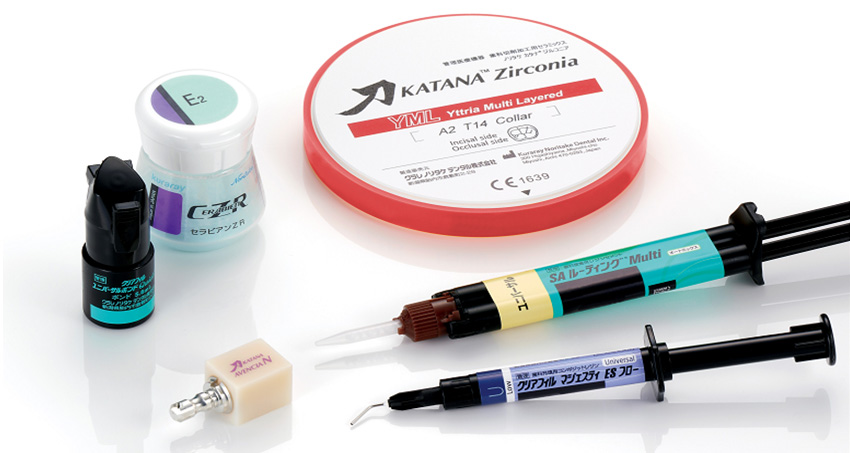Satoshi Yamaguchi, President of Kuraray Noritake Dental Inc., shares insights on maintaining Japan's leadership in medical technology despite rising regional competition. He discusses the role of digitalization in reducing healthcare costs, the challenges of same-day dental treatments, and how Kuraray Noritake is pushing the envelope in aesthetic dentistry and material innovation.

Over the last 25-30 years, we have witnessed the rise of regional competitors, particularly from Korea and China, that challenge Japan's market. Despite this stiff competition, Japan remains a leader in niche applications. For example, in flexible endoscopy, Japan holds over 90% of the market share. The question arises: How does Japan maintain its leadership in the medical field despite this intense regional competition?
I cannot be certain, but generally speaking, Japanese companies emphasize onsite treatment and address specific needs observed at the site. Compared to their rivals, Japanese companies tend to be more attuned to customer needs.
Additionally, offering multiple functionalities might be considered over-specification and add to the cost of the product. However, by providing these functionalities, the company can gauge if there is a genuine need for them.
Considering Japan’s rapidly aging population, there is substantial pressure to increase public expenditures. Consequently, significant efforts are being made to reduce medical and nursing care expenses. Hospitals incur considerable costs, such as diagnostics or multiple appointments with the same customer. With the rapid advancement in information technologies, we have seen the integration of AI and digitization in medical products to help reduce expenses for hospitals and clinics. What role do you think digitalization will play in the future of medical healthcare, and what steps is Kuraray Noritake taking to help reduce medical care costs?
The answer may not be straightforward, but addressing Japan’s aging population involves increasing the number of healthy seniors. A healthier elderly population can contribute to the labor force and reduce medical expenses. Thus, promoting preventive medicine and early recovery is key in addressing the aging demographic.
AI and digital tools are crucial for enabling self-health maintenance.
Turning to the dental field, our research and interviews in South Korea highlight the trend of same-day treatments. By utilizing faster scanners and milling machines, patients can receive full treatments within a single day, which benefits both patients and doctors. However, there are challenges, such as material availability and equipment accuracy. From your perspective, what are the main challenges associated with achieving same-day treatment?
The situation varies by the country’s social welfare system. For instance, the US is advanced in same-day treatments to reduce costs, while in Europe, the process often takes longer as patients and doctors aim for a more aesthetically pleasing finish. It depends on the country.
We provide machine products, such as zirconia, in major markets like the US, focusing on three elements: strength, aesthetics, and speed, which determine product quality.
Prioritizing speed can often compromise strength and aesthetics. Our advantage lies in delivering a timely product that maintains high quality, strength, and aesthetics. We achieve this through the development of zirconia powder as raw material and partnerships with CAD/CAM system manufacturers. Combining these factors helps us reach our goal.
Kuraray Noritake’s history of innovation, particularly in material products, is fascinating. The dental field is known for its conservatism, making it challenging to convince dental professionals to adopt new products.
That’s correct. We encounter this situation frequently.
With innovation at the core of your company, how do you educate the market? How do you ensure that new innovations are not only effective in the lab but also commercially successful?
Dentistry, as a form of medical treatment, requires avoiding mistakes, which is why it tends to be conservative.
In the field of dentistry, key opinion leaders (KOLs) play a crucial role in spreading awareness of innovative methods through academia, seminars, and word of mouth. It is virtually impossible for us to reach every dentist globally, so engaging with KOLs is essential for gaining their understanding. We also learn from them to better understand clinical situations, enabling improved communication with end-users and development of future products.
Evidence from academia is also a significant driver for convincing dentists and dental technicians. Researchers analyze newly developed materials from a research perspective, and this data helps KOLs understand the ease of manipulation and optimal usage of new products compared to current materials.
Dentists interested in our products reach out to us, and our in-house specialists provide information on optimal use. This ground-based approach helps increase awareness of innovative treatment methods and materials.

Kuraray Noritake Dental's multiple products
You mentioned opinion leaders and the growing trend of aesthetic dentistry. New requirements such as self-adhesive polymers and various delivery options are emerging. How are your products and future developments adapting to this trend?
We are pursuing aesthetic dentistry with a primary focus on zirconia, where we see high potential for improvement. The ultimate goal of aesthetic dentistry is to create a beautiful smile, and we aim to achieve this through our products.
I tell our company members that we aim to elevate oral health and wellness worldwide, including reducing “invisible stress” that dental professionals and patients may not even realize they have. Reducing this stress through our products and services is crucial for innovation. Understanding our customers, improving their situations, and delivering solutions should be our mission.
Earlier, you mentioned the importance of ease of manipulation in product development, especially considering the skill differences among dentists. In emerging countries, adopting the latest techniques can be challenging. How do you address the ease of manipulation in your product development to ensure effectiveness across varying skill levels?
Our research indicates that durability is paramount for dental treatments, and it should not be sacrificed for ease of manipulation. Thus, our company sets high standards for material durability and strength while combining these with simplified manipulation methods. Quality and strength are prioritized, with ease of manipulation added on top.
Your company has a significant focus on zirconia, known for its biocompatibility and durability. However, alternatives like pure porcelain and lithium disilicate are emerging. What are the advantages of zirconia over these alternatives?
Zirconia’s advantages include high strength and less tendency to accumulate plaque, as reported by many dentists. This reduces the risk of further decay, making zirconia a valuable material for preventing the deepening or worsening of cavities.
In 2012, you merged the expertise and technologies of Kuraray's medical division and Noritake Dental, expanding your portfolio to include high-tech adhesive products, porcelain, zirconia, and CAD/CAM blocks. What synergies have you created between these products, and what trends do you see driving future growth?
Several synergies have emerged. In sales and marketing, we provide comprehensive solutions. On the development and production side, our in-house researchers have discovered that inorganic and organic sciences are distinct.
The merger of Kuraray’s organic perspective and Noritake’s inorganic perspective has led to innovative methods. For example, our KATANA™ AVENCIA™ resin block, covered by the Japanese insurance system, utilizes a unique production method combining Kuraray’s and Noritake’s know-how.
Looking deeper into this topic, you mentioned a change in production methods for blocks. How do you view the market share of this technology in CAD/CAM blocks? Which sectors are likely to prefer this technology?
Market coverage varies by region. For instance, zirconia is prominent in the US, while KATANA™ AVENCIA™ is more common in Japan, where it is covered by health insurance, whereas KATANA™ Zirconia is a privately paid treatment.
Emerging technologies, like AI-assisted milling, are also advancing. How do your technologies fit with these new milling technologies, and how do partnerships with equipment makers benefit your products?
We focus on materials rather than machinery, so we prefer collaborating with machining professionals to enhance and create innovative treatment methods. While we may explore in-house development if necessary, our current focus is on partnerships with existing machinery companies.
To improve efficiency, you’ve opened subsidiaries in countries like Brazil, the US, China, and Europe. These subsidiaries help tailor products to regional needs and enhance marketing. Could you explain the importance of localization and your future strategy for international expansion? Are there plans for new subsidiaries?
Having global subsidiaries is crucial for our business growth. Understanding local treatment situations helps us develop suitable materials. Local staff who understand regional conditions aid in providing optimal solutions. For example, dental certification varies by country, impacting how we tailor our products.
Your company has a diverse international presence, including developed economies like the US and Europe, as well as emerging markets in Asia. Looking ahead, what will be your main focus? Which region offers the highest growth potential and why?
We are focusing on the European and US markets because, although emerging markets have higher growth rates, our products are gaining traction in mature markets with key opinion leaders. We aim to increase our market share in these developed regions while also focusing on Southeast Asia, South America, and other emerging markets.
Finally, if we were to interview you again in five years, what goals or ambitions do you hope to have achieved? What is your vision for Kuraray Noritake?
Our global workforce is growing, and many employees are passionate about our products. We want to continue elevating oral health and wellness and transform from a technological company to one offering holistic solutions to oral care issues. Our goal is to build a strong brand supported by our product lineup and comprehensive support.
For more information, visit: https://www.kuraraynoritake.com/
0 COMMENTS